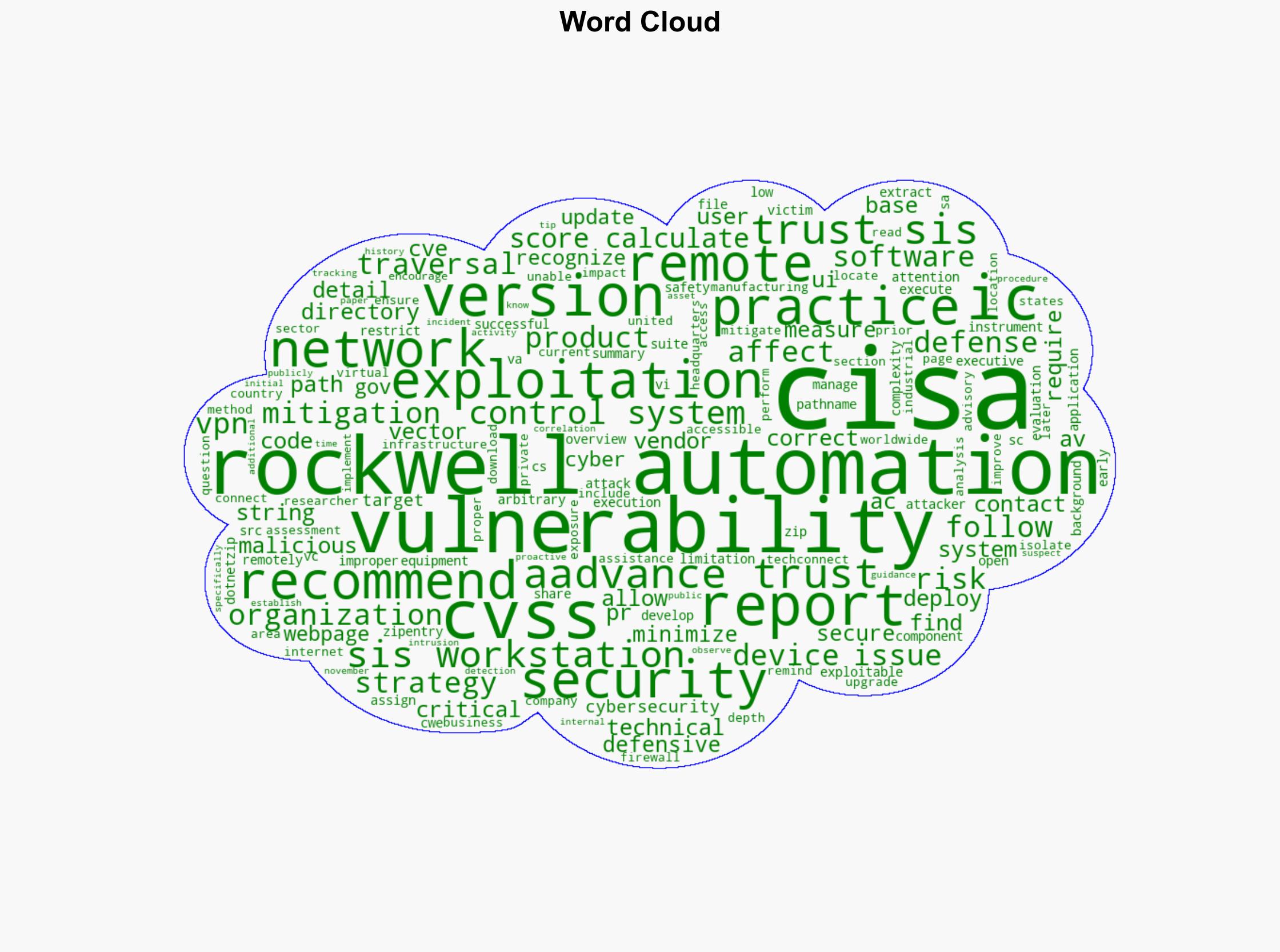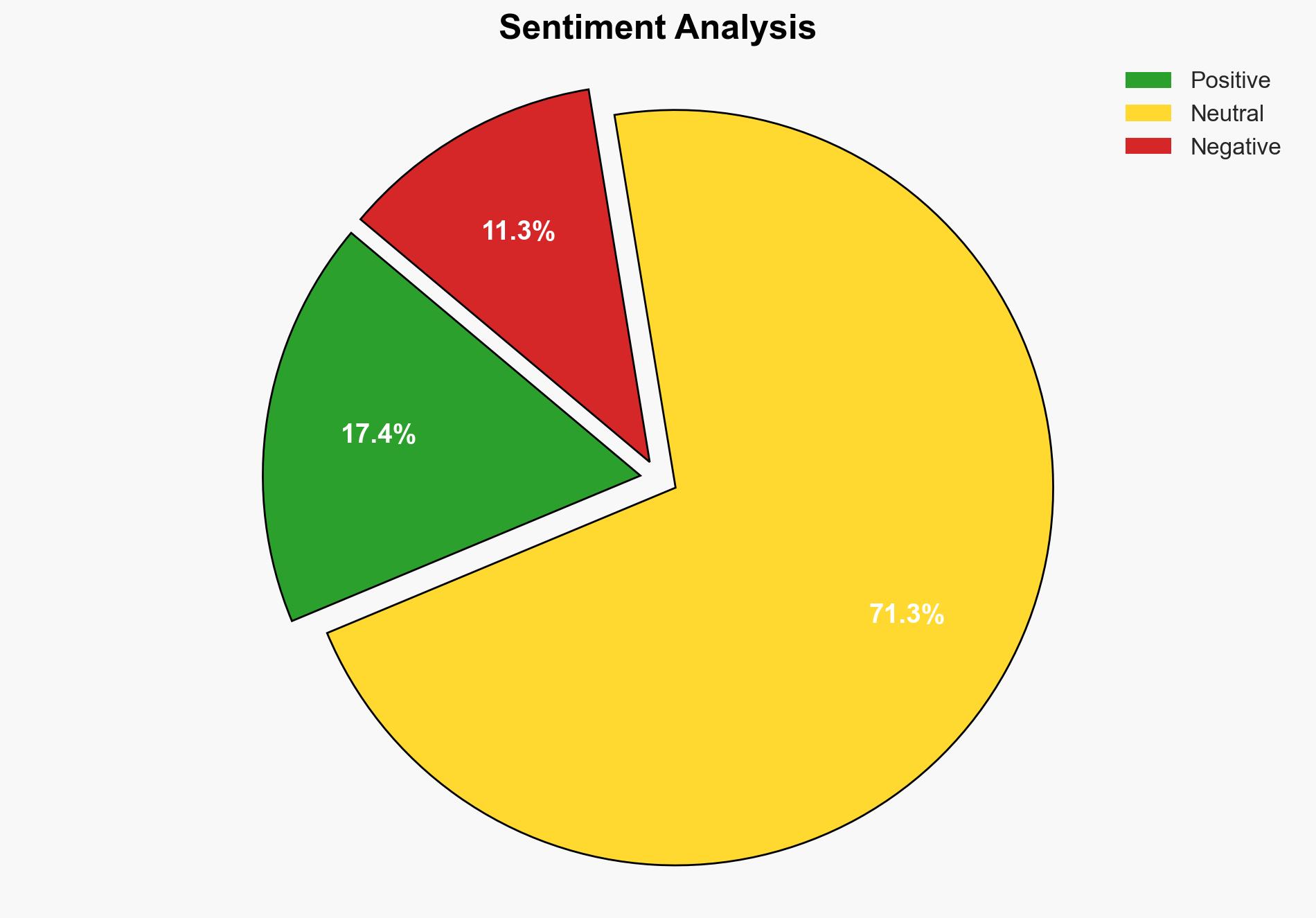Rockwell Automation AADvance-Trusted SIS Workstation – Cisa.gov
Published on: 2025-11-13
AI-powered OSINT brief from verified open sources. Automated NLP signal extraction with human verification. See our Methodology and Why WorldWideWatchers.
Intelligence Report: Rockwell Automation AADvance-Trusted SIS Workstation – Cisa.gov
1. BLUF (Bottom Line Up Front)
The most supported hypothesis is that the vulnerability in the Rockwell Automation AADvance-Trusted SIS Workstation poses a significant cyber risk to critical infrastructure sectors due to its potential for remote code execution. This risk is heightened by the global deployment of the affected systems. The recommended action is to prioritize patching and implementing robust network segmentation and access controls. Confidence Level: Moderate.
2. Competing Hypotheses
Hypothesis 1: The vulnerability in the AADvance-Trusted SIS Workstation represents a critical threat to global critical infrastructure due to its potential for remote code execution and widespread deployment.
Hypothesis 2: The vulnerability is a manageable risk, primarily affecting systems that have not implemented recommended cybersecurity practices, such as network segmentation and restricted access.
Hypothesis 1 is more likely due to the nature of the vulnerability (remote code execution) and the critical sectors involved. However, Hypothesis 2 cannot be dismissed, as effective cybersecurity measures can significantly mitigate the risk.
3. Key Assumptions and Red Flags
Assumptions: It is assumed that all affected systems are equally vulnerable and that the vulnerability can be exploited without significant barriers. Another assumption is that organizations have not yet fully implemented recommended cybersecurity practices.
Red Flags: The reliance on vendor-provided patches and updates could be a bottleneck if not promptly addressed. The potential for undisclosed vulnerabilities or exploitation techniques is a concern.
Deception Indicators: There is no current evidence of deception, but the possibility of threat actors exploiting the vulnerability without detection remains.
4. Implications and Strategic Risks
The vulnerability could lead to cascading threats, including disruption of critical infrastructure operations, economic losses, and potential political ramifications if exploited by state-sponsored actors. Cyber risks could escalate if the vulnerability is weaponized or if similar vulnerabilities are discovered in related systems.
5. Recommendations and Outlook
- Actionable Steps: Organizations should immediately apply available patches, implement network segmentation, and restrict access to critical systems. Regularly update and audit cybersecurity practices.
- Best Scenario: Vulnerability is patched without incident, and organizations enhance their cybersecurity posture.
- Worst Scenario: Exploitation leads to significant disruptions in critical infrastructure, with geopolitical tensions rising.
- Most-likely Scenario: Some exploitation occurs, but widespread impact is mitigated through proactive cybersecurity measures.
6. Key Individuals and Entities
No specific individuals are mentioned. Key entities include Rockwell Automation and CISA.
7. Thematic Tags
Cybersecurity
Structured Analytic Techniques Applied
- Adversarial Threat Simulation: Model and simulate actions of cyber adversaries to anticipate vulnerabilities and improve resilience.
- Indicators Development: Detect and monitor behavioral or technical anomalies across systems for early threat detection.
- Bayesian Scenario Modeling: Quantify uncertainty and predict cyberattack pathways using probabilistic inference.
- Network Influence Mapping: Map influence relationships to assess actor impact.
Explore more:
Cybersecurity Briefs ·
Daily Summary ·
Methodology





